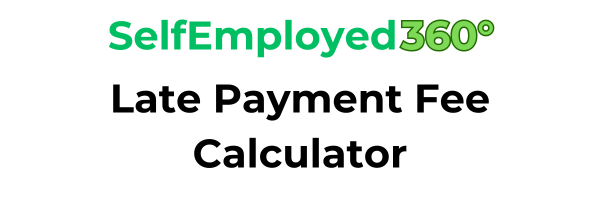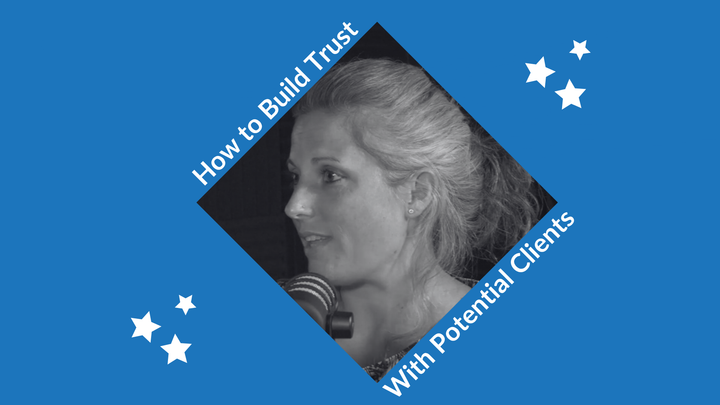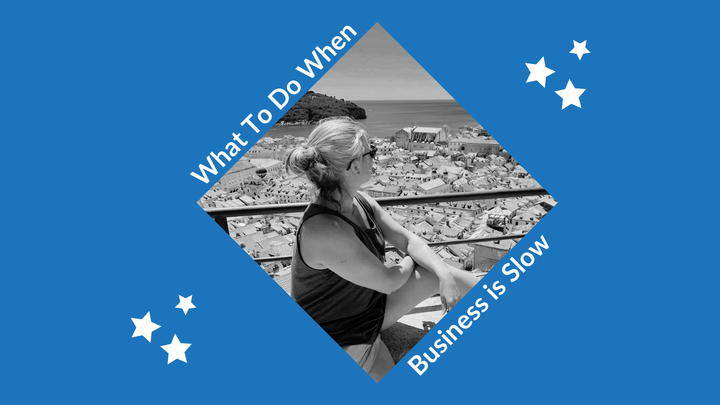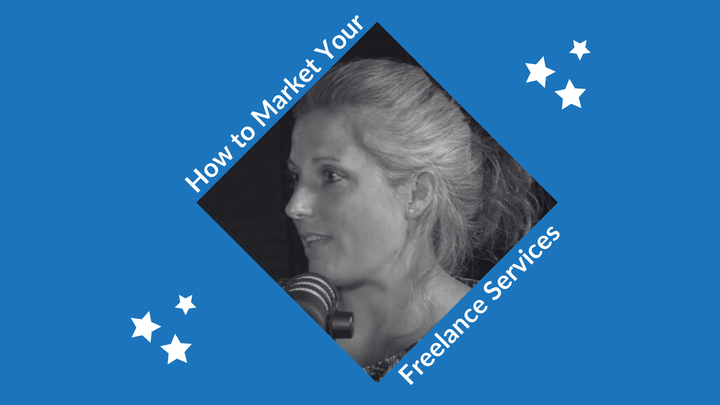How To Get Paid Up Front
When you get the money part out of the way at the start, it never becomes an issue. Plus, you have more control over your cash flow.

Are you familiar with the story of the Pied Piper of Hamelin?
Hamelin has a serious rat problem - it's overrun with them. The mayor is desperate for a solution but has no idea what to do.
Then along comes the Pied Piper. He tells the mayor he can get rid of the rats in return for a payment of gold. The mayor agrees to the terms.
The Pied Piper picks up his pipe and plays, and the rats follow him out of Hamelin never to be seen again. The problem is solved, and everyone is happy. But when the Piper returns for his gold, the mayor refuses to pay.
Obviously, the Piper is not happy about this - he's fulfilled his part of the deal but the mayor isn't fulfilling his. So the Piper decides to take drastic action. He picks up his pipe and all the children follow him out of town, never to be seen again.
But what does this story have to do with freelancers?
Well, unfortunately, the Piper's story is all too familiar to freelancers. Not the stealing children part, but the delivering on a promise and then not getting paid part.
Almost every day, I see posts from frustrated freelancers chasing unpaid invoices and asking for advice on how to deal with non-payers.
And I don't know why it's such a common problem because the solution is simple: get paid up front.
When you get the money part out of the way at the start, it never becomes an issue. Plus, you have more control over your cash flow.
Getting paid up front solves problems before they occur
I once spent three months chasing a £90 invoice. Ridiculous, right?
It took more time writing the chasing emails and making calls than it took me to do the work in the first place.
And this wasn't uncommon. Fortunately, I never had anyone who didn't pay, but I did have a few slow payers in my first couple of years.
Then I switched to charging up front.
I started off by charging 25% deposit on big projects. I didn't get any pushback, so I changed this to 50% up front. After a while, I switched to 100% up front.
And do you know what? Nobody questioned it.
So now I take payment for everything up front.
Some of my clients are on Direct Debit, others pay BACS. I have Stripe set up for my online courses, consultations, and subscription payments.
I make it easy for people to pay. And getting paid is easy for me.
No more wondering when I'll get paid.
No more awkward "just checking you received my invoice" conversations.
No more time wasted chasing late payments.
If only I'd started doing it earlier.
Why are so many freelancers reluctant to ask for money upfront?
There's this weird misconception among freelancers that clients won't be prepared to pay up front. It's rubbish.
We all pay for loads of stuff in advance - it's not unusual.
And even if most people in your industry accept payment on completion, it doesn't mean you have to.
Some hotels charge you when you book, some take payment at check-in, and some let you pay when you leave.
Same with eating out - sometimes you pay when you order, and sometimes you pay at the end of your meal.
You never say "well this other company does it this way" - you just accept the terms of that particular business.
If your client wants to work with you, they will accept your terms. And if they don't, you can decide whether you want to be flexible or if it's too much of a risk.
Managing payment for fixed-priced projects
Fixed-price work is the easiest type of work to get paid up front for. The client has agreed your price, so they clearly have the budget for it. And if they have the budget for it, then it doesn't matter whether they pay now or at the end - on paper the money has been accounted for (or at least it should have been).
So once your quote has been accepted, you send the invoice. As soon as payment is made, you schedule the work.
If the project is time-sensitive, add a note to your proposal:
To complete this project by X date, I'll need confirmation and payment by Y date.
And stick to it. Don't start work until payment is made.
Phased payment
If you don't feel confident charging the full amount up front or if the project is high-value or complex, you can offer a phased payment plan.
For example, when I had my home office installed, the terms were: 10% deposit to confirm work, 80% of the balance paid the week before installation, and 10% final payment once the installation was complete and any issues were fully rectified.
This could easily be applied to other types of work - a website project, for example. 50% up front, 40% once the site is designed (but before it goes live), final 10% once any amendments or tweaks have been completed.
Or if you're delivering a project in phases, you take payment before each phase. And if payment isn't made, you don't start work on the next phase until it is.
Retainer packages
Fixed-price retainer work is easy to manage. Get your clients to set up a direct debit and then take payment at the start of each month before work is completed.
I used to do this when I was writing blog posts for clients each month - the DD came out on the first of the month and I'd send the completed blog posts by the date we agreed.
If the retainer work isn't at a fixed price each month or it's on an ad-hoc basis, direct debit is still a good option - you just amend the amount you invoice each month.
For example, if you work on an hourly rate, you could set a minimum charge of, let's say, 10 hours per month and the client pays for the first 10 hours up front. Any additional hours get added to next month's invoice. Any hours they don't use can be carried forward (depending on your terms).
Payment options
BACS is probably the most common way of taking payments and it's easy enough to include payment details on your invoices.
If you want to give clients a choice, you can use a payment processor such as PayPal or Stripe. I use Stripe and recommend it. It makes it easy to take online payments.
If you use Xero for accounting, you can integrate Stripe so it adds a 'pay now' link to your invoices. Clients can still pay by BACS but they have the added option of making a credit or debit card payment using Stripe. Some people prefer doing it this way and I'm a big fan of making it as easy as possible for people to pay.
Stripe is free, but you do pay a small fee on any transactions. I think it's worth it for the convenience it offers both you and your clients - you can always account for it in your pricing if you have tight profit margins.
Go Cardless is great for taking direct debit payments. Again, I use it in my business and a lot of my suppliers use it too as it's really easy to set up (and easy for clients to set up their end). I recommend it for retainer work or clients you'll be working with regularly. Again, you can integrate it with Xero to make life even easier.
Another payment option is escrow - I've never used it myself, but it can be beneficial if clients aren't sold on the idea of paying upfront.
Escrow is essentially a holding account managed by a third party. You agree the terms with the client, they pay the money into escrow, and then you do the work. Once you've delivered the agreed work, the money is released to you.
If the client decides they don't want to pay, you're covered. As long as you can prove to the escrow company that you have delivered to the agreed terms, they'll give you your money.
Escrow protects both parties - the client pays up front, so you know the money is there and will be transferred as soon as the work is complete. The client feels comfortable paying because they get their money back if you don't deliver what has been agreed.
This can be great if your invoices are very high value (escrow is often used in the buying and selling of property) or if clients are wary of paying up front.
Late payment fees
Getting paid up front means you don't have to worry about late payments. No payment, no work.
But if you already have some late payers, you are entitled by UK law to charge interest and fees on overdue invoices.
This late payment calculator can help you figure out what to charge and will give you some wording to use in your email. Quite often just the threat of extra fees and fines can motivate people to pay quickly.

Are you getting paid up front?
You might be worried that charging up front will put people off - it won't. There are plenty of people and companies out there who are happy to pay up front.
I actually prefer paying up front because once I've decided to buy, I've committed the money, and it's easier to see where I am with my accounts if I pay it out straight away.
And because I get paid in advance myself, I'm never waiting for outstanding invoices to be paid, so I have the cash there to pay with.
So if a potential client is refusing to pay up front, you need to find out why.
If it's because the client doesn't trust you, then you have some work to do. And your problem is bigger than getting paid. Do you really want to work with someone who is worried you might screw them over? It's not a great way to start a relationship.
If it's because they don't have the money (maybe they are waiting on invoices to clear), then are you sure you want to take on the risk? If you agree to wait for them to get paid before you get paid, you might never get paid. What if the money doesn't come in? What if they do have the money, but have no intention of paying you? If it's just a case of them not having the funds, then why not wait until they do have the funds?
So find out why they won't pay up front. If they have a valid reason, you can always work with them to find a compromise that works for both of you.
You don't have to suddenly change your payment terms for existing clients if they are good payers. Start with new clients or those that have a history of paying late. It might feel scary introducing a new process, but it'll be worth it.
I changed from charging on completion to charging up front and you can too. If you need help doing it, drop me a message.




